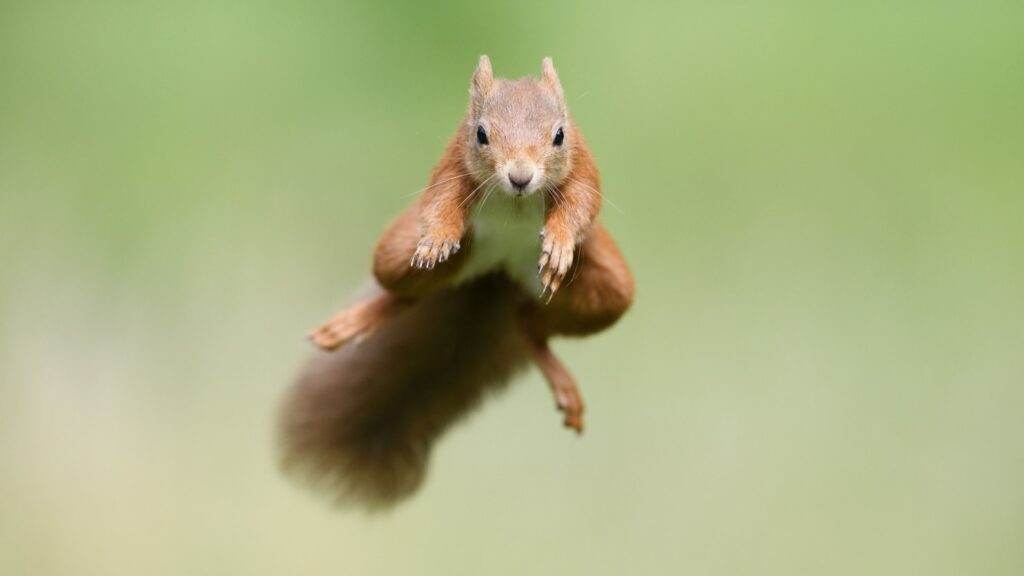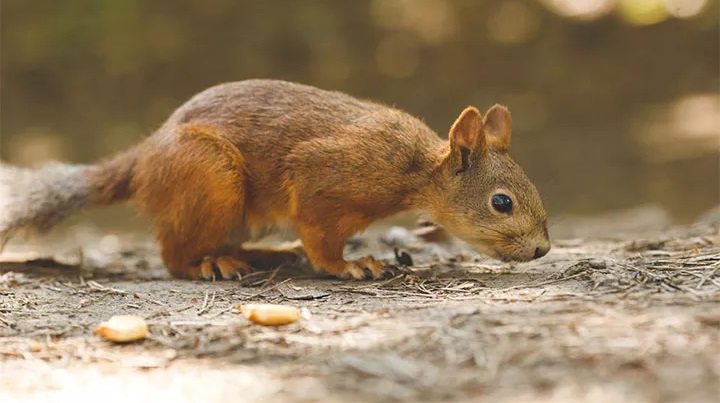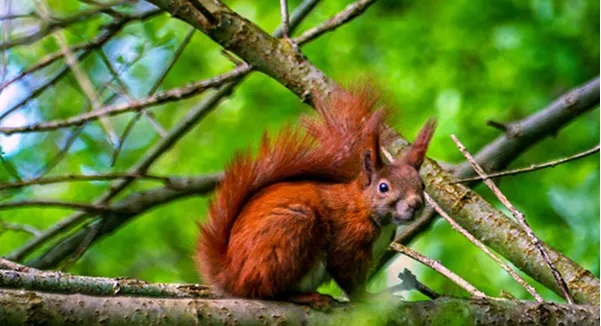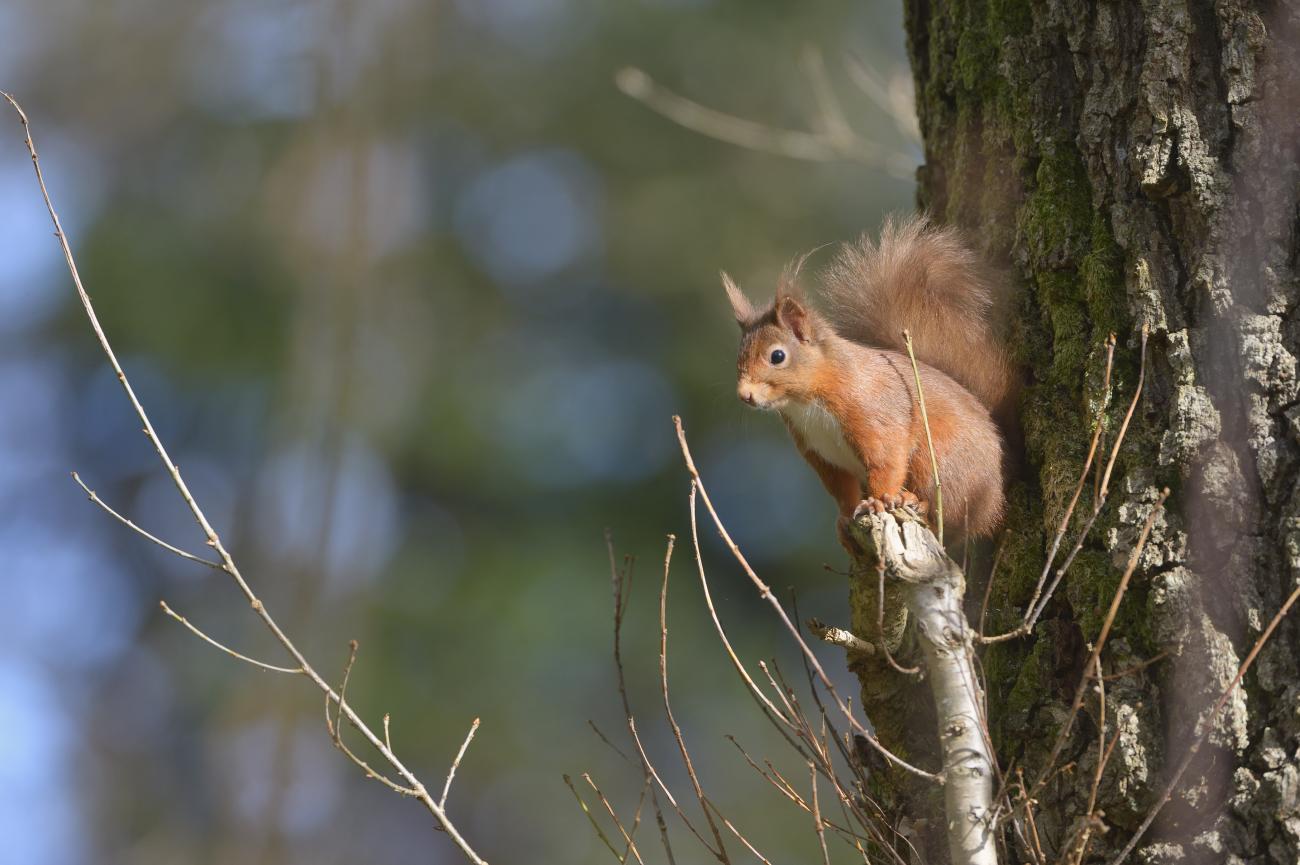Squirrels are little, hair-covered rodents. They’re constantly set up worldwide and have acclimated to various territories and environmental situations. It’s well known that squirrels can conserve nuts, scale trees, and communicate and interact with one another. However, The discussion continues: how far do squirrels travel in a continuance? Do they keep staying in the same place or move to new places? The response varies on several certain factors, including gender, season, ethnic background, and the kind of squirrels traveling.
In this piece of content. We’ll examine some frequently asked questions about squirrels’ travel distance, encompassing:
- Why Are The Factors Impacting The Distances Squirrel Travels?
- How Important Ground Do Squirrels Cover Each Day?
- From Their Nest, To What Extent Do Squirrels Travel?
- How far do squirrels travel in their life?
- How far do gray squirrels travel?
- How far do red squirrels travel?
- How Do Squirrels Navigate Their Home Back After Traveling A Far Distance?
Why Are The Factors Impacting The Distances Squirrel Travels?
The distances traveled by squirrels are influenced by a combination of biological, environmental, and behavioral factors. One key factor is the species of squirrel, as different species exhibit varying levels of agility, energy, and territorial behavior. The availability of food resources also plays a crucial role; squirrels may travel longer distances in search of abundant and high-quality food sources. Seasonal changes can impact their movements, with squirrels often covering greater distances during periods of resource scarcity or when preparing for winter by foraging and storing food.
Additionally, the presence of predators and competition for territory can influence their travel patterns, prompting them to explore new areas or adopt specific routes to avoid potential threats. Environmental factors such as urbanization and habitat fragmentation may further impact the distances squirrels travel, as these changes can alter their access to suitable habitats and influence their ability to navigate through their surroundings. Overall, the distances squirrels travel are a result of a complex interplay between biological, environmental, and behavioral factors that shape their daily movements and survival strategies.
Several factors can influence how far squirrels travel. Here are some critical factors based on the search results:

Source Of Food
Squirrels can travel 2-5 miles or more based on the food source. If enough food is available, squirrels may only travel a short distance away, more than 2 miles.
Distance To Refuge
Squirrels feeding far from trees should have greater flight initiation distances than those feeding near trees.
Costs Benefits Of Flight
Factors related to the costs. Benefits of flight, similar to food facility or being engaged in other conditioning, can impact flight circles in squirrels’ travel.
Desire To Travel
Generally, squirrels travel two long hauls a day, but they can travel up to 10 long hauls in one day if they want to.
Home Range
The conditioning range of squirrels is generally lower than five long hauls, and it’s rare for squirrels to travel larger than ten long hauls. Red squirrels generally have home ranges between two and ten hectares, typically seven hectares( 17 acres).
How Important Ground Do Squirrels Travel Each Day?
Up to two long hauls can be traveled by squirrels each day. They’re allowed to be safe to wander around within this trip range. They’ll have to find a way to leave their home region for further time than this.
On a typical day, a squirrel can travel up to 10 long hauls, but returning to its colony is challenging. The factual range of exertion for squirrels is lower than five long hauls. Thus, if you want to avoid your pet squirrels getting lost, there is only one way to let them travel further than five long hauls.
Generally, squirrels travel in a straight path at night. They may go either to the face or in trees. Still, they generally take a path analogous to the bone they traveled when they arrived. Generally, squirrels stay within many long hauls of their endless hearthstone area. They generally move about in the hunt for food and mates.

From Their Nest, To What Extent Do Squirrels Travel?
Their age, species, and food force tell the range of squirrels’ travels. For example, when the youthful gibs leave the nest, they only travel up to two kilometers from their nest or home. However, they may walk inside your house or theater, your neighbor’s house coming door, If the squirrels’ nest is in your yard.
Nonetheless, depending on their gender, squirrels can travel further distances. A manly squirrel, for case, may go further than a womanish. Depending on where their food comes from, squirrels can travel 2 – 5 kilometers or more.
However, if a food force is nearby, squirrels will likely walk only two long hauls to get to it. The flashback that squirrels can make. Keep in mind; squirrels make their home where they get food and water fluently.
When a squirrel is youthful, it’ll stay in one area for many months before expanding its home range. However, it’ll stay there longer If that area is close to where it was born. When the squirrel is about two times old, it’ll have expanded its home range to many long hauls. After that, it’ll stay in one area for only many months at a time. During downtime, squirrels will stay in one area longer when food is scarce. But the squirrel will travel further during the summer when food is abundant.
How Far Do Squirrels Travel In Their Life?
It’s delicate to say how far squirrels travel in their entire life. It depends on how long they live and how hard you throw them. Still, a wild gray squirrel gets a time of lifetime, and it could travel roughly long hauls in that time. But the experience we gained says a different thing. The pet squirrels most go as far as two block radius, and most of their time is spent their the trees around the home. Still, they only go a short way to find food if the squirrels get enough food to eat in the surroundings where they live.
The lifetime of a squirrel also depends on the species and the terrain. For illustration, North American argentine squirrels generally live for 6- 10 times in the wild and over 20 times in prison. Red squirrels live in the wild for 3- 7 years and over ten years in prison. The main pitfalls to squirrels are bloodsuckers, conditions, accidents, and mortal conditioning.
How Far Do Gray Squirrels Travel?
Gray squirrels are among the most common and vast in North America and Europe. They’ve gray fur with white underbodies and bushy tails. They’re omnivorous and eat nuts, seeds, fruits, fungi, insects, eggs, and occasionally small creatures. They’re also known for their capability to acclimatize to different territories and climates.
Grounded on niche quality, the home range of a slate squirrel travel can be 1- 25 acres. Indeed, slate squirrels have the most significant home compared to how red squirrels travel. So these squirrels travel far down and can return to their nest quickly. Like other species of squirrels, slate squirrels always travel far down from the home if there’s enough source to get food & water.
How Far Do Red Squirrels Travel?
Red squirrels are lower and further nimble than slate squirrels. They’ve sanguine-brown fur with white underbodies and observant snowbanks. They’re substantially carnivorous and eat seeds, nuts, berries, kids, and mushrooms. They’re also veritably territorial and defend their food caches from other squirrels and creatures.
The home of a red squirrel is lower than a slate squirrel. These squirrels go around 1- 2 long hauls from their nest and find food to eat between this range. Still, the red squirrel has a much longer home range lasting up to three times. Red squirrels are more sensitive to niche fragmentation and loss than slate squirrels. They prefer coniferous timbers and avoid civic areas.

How Do Squirrels Navigate Their Home Back After Traveling A Far Distance?
Squirrels mark their territory in various ways, including through urine and scent glands close to their mouth. They may strip bark, rub their scent glands on food or trees, and spray urine. During the breeding season, females frequently scent-mark, rubbing their cheeks and anus on branches, gnawing bark, and squirting. When squirrels travel far away, they may also mark their territory with tail-waving displays and bark warning calls at passing intruders, including humans.
Moreover, they construct their nests, known as dreys, out of outgrowths and leaves, with lawns and leaves lining the inside. They place these nests along branches or structures and may have multiple dreys. Some ends of squirrels, similar totoround squirrels, may dig burrows or make dreys in low, concealed spots.
Squirrels have a homing instinct that allows them to find their way back home after traveling long distances. Although wisdom doesn’t understand it well, squirrels can return several miles to their nests. Some squirrels travel and return home after roughly 15 long hauls. Squirrels also pass down their nesting spots from generation to generation, which helps them find their way back home. Still, the exact medium by which squirrels navigate back to their nests is unknown.
Squirrels have a keen sense of smell that they use to detect food and recognize their cousins.
Also, squirrels can describe a variety of scents from great distances, depending on the type of squirrel and the environment.
Conclusion
Squirrels are fascinating creatures that can travel great distances in their lives. Still, their the range of squirrels travels depends on numerous factors, such as the species, the food vacuity, the season, and the gender. Squirrels mark territory using various methods, including urine, scent glands, bark stripping, and spraying. They are territorial, speak, and breed twice a year. They build dreys and have a homing instinct, passing down nesting spots. Their keen sense of smell aids in food detection and recognizing cousins. Squirrels can travel up to 2
Long hauls per day on average, but they can go up to 10 long hauls in some cases. Squirrels can live several years in the wild and, indeed, longer in prison.



















